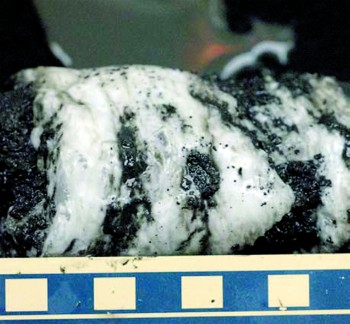Drilling Deep for Fire and Ice
October 23, 2014

The U.S. Department of Energy (DOE) will fund a project led by the University of Texas at Austin’s Institute for Geophysics (UTIG) to drill, sample and analyze deposits of frozen methane under the Gulf of Mexico that hold enormous potential to increase the world’s energy supply.
The agreement, which was still being finalized at press time, includes roughly $41 million in DOE funding and $12 million from industry interested in the project and the research partners.
The grant funding will allow researchers to advance scientific understanding of methane hydrate, a substance found in abundance beneath the ocean floor and under Arctic permafrost. In addition to UTIG, the study includes researchers from The Ohio State University, Columbia University’s Lamont Doherty Earth Observatory, the Consortium for Ocean Leadership and the U.S. Geological Survey.
Estimates vary on the amount of energy that could be produced from methane hydrate worldwide, but the potential is huge.
In the Gulf of Mexico, where the team will be sampling, there is estimated to be about 7,000 trillion cubic feet (tcf) of methane in sand-dominated reservoirs located near the seafloor. For comparison, the United States used about 26 tcf of natural gas in 2013. Many large global economies lack clean and secure energy supplies but have potentially enormous hydrate resources, so methane hydrates have the potential to contribute to long-term energy security within the United States and abroad.

Methane hydrate is stable under high pressure and low temperatures but melts quickly when it is warmed or depressurized, causing the methane to bubble away. This poses significant technical and scientific challenges to those working to eventually produce energy from the deepwater deposits.
“The heart of this project is to acquire intact samples of this stuff so that we can better understand how to produce these deposits,” said Peter Flemings, a professor and UTIG research scientist who is the project’s principal investigator.
Data gathered during the four-year project will help scientists to more accurately estimate the occurrence and distribution of marine hydrates and lay the groundwork for future production efforts.
“I think methane hydrates are one of the most fascinating materials in the planet,” Flemings said. “They store energy, they look like ice but burn, they may impact climate, and they may cause submarine landslides.”
Read more about the project.
Back to the Newsletter